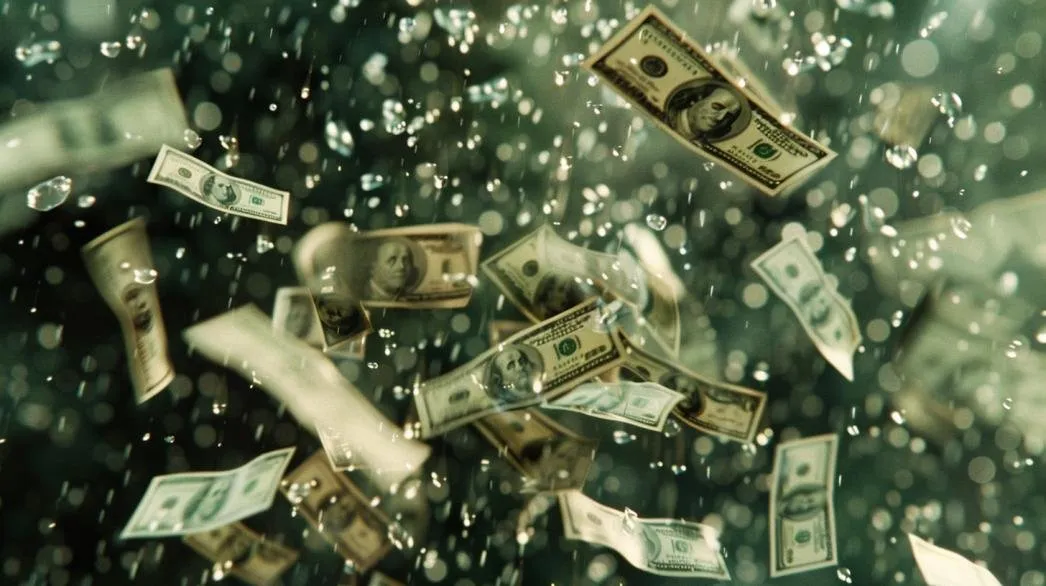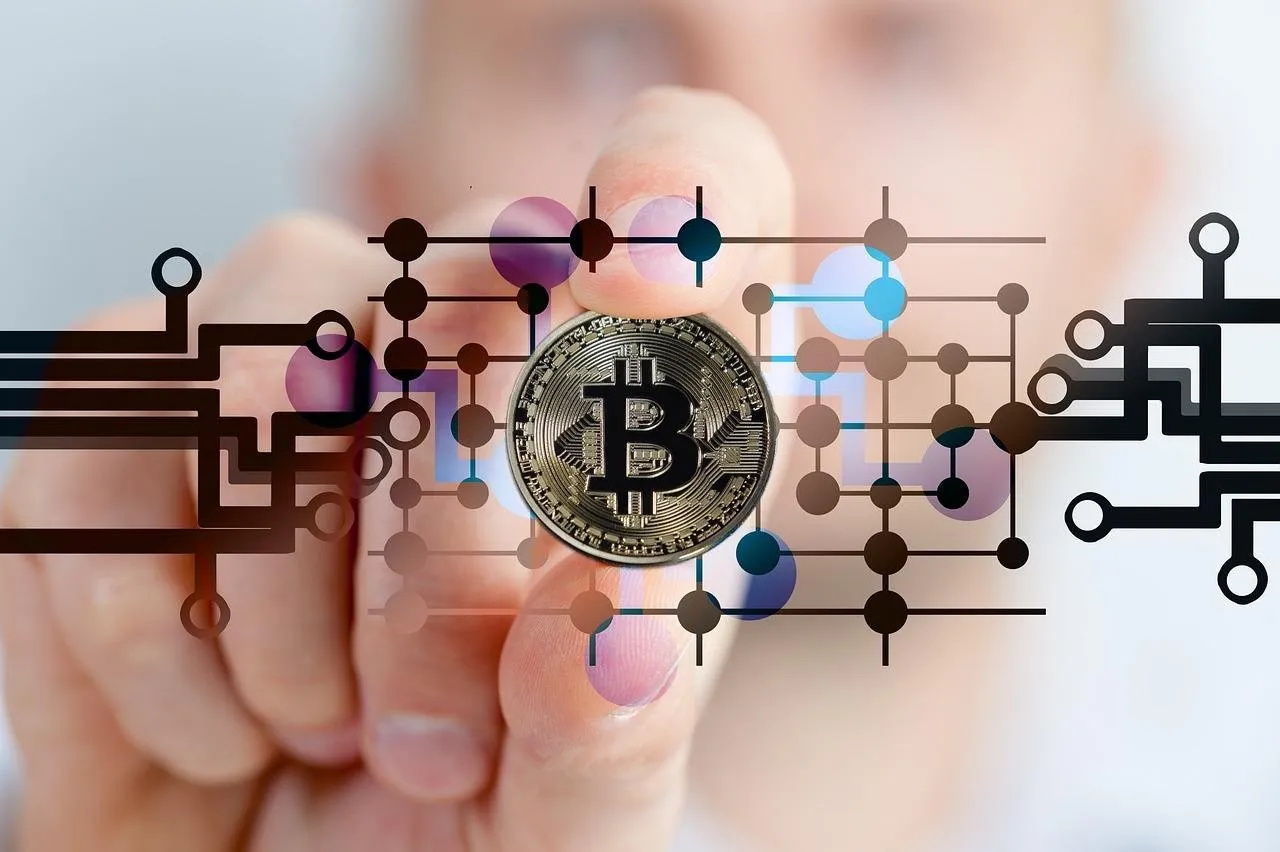Today I was listening to a podcast with Raoul Pal called Impact Theory (The video is down bellow). Yeah it's a long one and I haven't even finished it, but so far... HOLY SHIT!
There were a few parts I needed to go over a couple of times and one specifically comes to mind; bitcoin along with the market goes up when the fed prints money. I had previously noticed of course that with stimulus money, the people spend. That money tends to flow into crypto, the markets, housing, fine art and other more "fixed supply" assets. Also, I'm sure a lot of that money is spent mindlessly... But that's a whole different topic really!
But something clicked inside me when I heard this conversation, because I have seen this to be true but never really put two and two together. It's about predicting when the "buy low, sale high" moments are coming.
Right now we're coming up from $18,000/Bitcoin and it's price has almost tripled!!! It's insane, but that last low is quite a bit higher than the previous low... So does that mean the next high will be higher than the previous one?
I would think so, but I'm not an expert at this money game, far from it... but the more I delve into it the more I can put the pieces of the puzzle together.
Quantitative easing (QE)
This is an interesting trick the Fed uses for times of trouble. While it seems like they're printing money, they're actually debasing the currency and creating the illusion that there is more money to go around. This makes the price of assets go up, but again it's only how it seems to be.
When you put the value of an asset up to the value of a debased currency, the asset holds stable while the currency goes down, creating a price go up illusion.
Once that clicked... I realized that assets of fixed supply are really the only things worth collecting to preserve wealth. Hence bitcoin...
What Makes The Money Printing Start
The US national debt stands close to $35 trillion... and going up. So how do you think the US plans on paying that debt, tax payers? Yes and no. It will be on our heads but indirectly, through borrowing more money. This is the hidden tax that inflation puts on everyone!
Unfortunately, the money that is borrowed will only pay for the interest. Eitherway, our job is to figure out when they will start the next "Money Printing" run.
At this moment they're burning money (QT) which in theory should make asset prices go down when you compare it to the value of the dollar. At some point people will want to hold on to their scarce money supply, be more frugal, and stop buying assets. Even with this illusion of asset prices being lower, the average Joe will still feel a need to hold on to what little money he makes, because his wages don't really change.
Prices should start coming down at some point, but the thing is, we're in the middle of an election year... What does that mean for the money printer? Does it mean the government will put pressure on the federal bank to start printing again so that voters can feel rich again and confident about who to vote for?
In the end it's all about psychology, which is why people also buy assets when the price is goin up. It's the excitement of an idea that the future you can be rich if you invest now while it's hot. with QT in effect right now, I'm wondering when the effects of it will be felt by the markets.
We're also funding a couple of wars and Taiwan, creating a bigger debt for ourselves. So as they're burning money, are they also sending it out of the country? It seems all like too much risk. The money supply seems like it would shrink pretty fast.

Let's look at a few triggers that can make the printer turn on again:
The Federal Reserve, the central banking system of the United States, has the authority to print money, but it does so cautiously and typically as part of its monetary policy operations aimed at managing the economy.
Economic Stimulus: During times of economic downturn or recession, the Federal Reserve may choose to print money to stimulate economic activity. This can be done through various mechanisms such as purchasing government securities or implementing quantitative easing (QE) programs, which inject money into the financial system.
Monetary Policy: The Federal Reserve adjusts the money supply to achieve its dual mandate of maximum employment and stable prices. If inflation is low and economic growth is sluggish, the Fed may increase the money supply to lower interest rates, making borrowing cheaper and encouraging spending and investment.
Bank Liquidity: The Federal Reserve may print money to provide liquidity to banks during times of financial stress or crisis. By injecting money into the banking system, the Fed aims to prevent bank failures and maintain stability in the financial system.
Currency Demand: If there is an increase in demand for currency (physical cash) in the economy, the Federal Reserve may need to print more money to meet this demand. This can happen during times of uncertainty or crisis when people may prefer holding cash as a safe asset.
Government Debt Monetization: Central banks may directly finance government spending by printing money, a practice known as debt monetization. While this is generally avoided due to the risk of fueling inflation and undermining confidence in the currency, it can occur in times of war, severe economic crises, or when traditional sources of financing are unavailable.
So when we look at these, we can see that we've hit a bunch of these pretty recently and we're heading into more of them. The economic stimulus just ended a few months ago, Banks were baled out last year, we will soon come to a point where people want to hold on to their cash again so there will be a currency demand. The wars aren't finished, so that means government debt monetization will be on again soon too.
Final Words
Don't freak out, make the best of the day as it is, but be smart about investing. The money game is harder to understand than I thought, but I am making sense of it every time I read or listen to economists talk about their understanding of it all.
It's a fascinating subject that has had the world up in arms over getting rich, but the thing is it's just like anything else in life, it's a game you can learn to play too. Most importantly, don't let your emotions make your investment decisions for you. History doesn't quite repeat itself, but it does mimic its passed a lot.
**So figure out where we stand in this story and position yourself where you think it best leverages today's decisions to give you the outcome you want. **
Visit our Etsy Shop at Fractal Jungle
| Hive | Presearch | Odysee | Minds | Hipcamp |
Find me on Social Media:
LBRY: https://lbry.tv/$/invite/@MugwortExpress:5
Odysee: https://odysee.com/$/invite/@MugwortExpress:5
Minds: https://www.minds.com/register?referrer=NoMansLand



